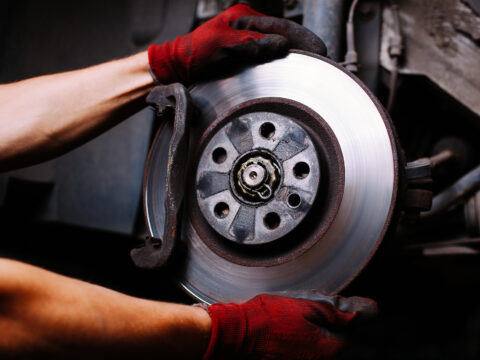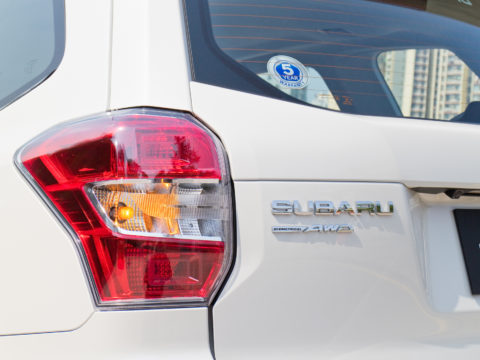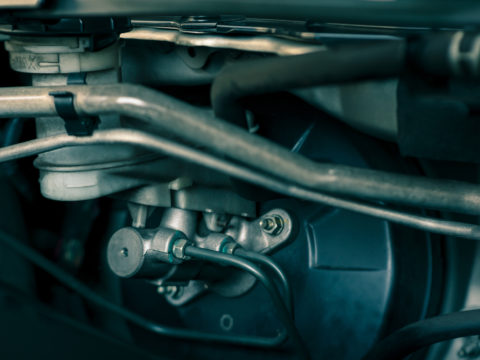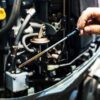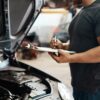Brake fluid is a vital part of your car. A brake fluid leak can be very hazardous. As a driver, you should know as much as you can about brake fluid leak causes, symptoms, and repairs.
Let’s do a car brake fluid overview so you can see why it’s so important.
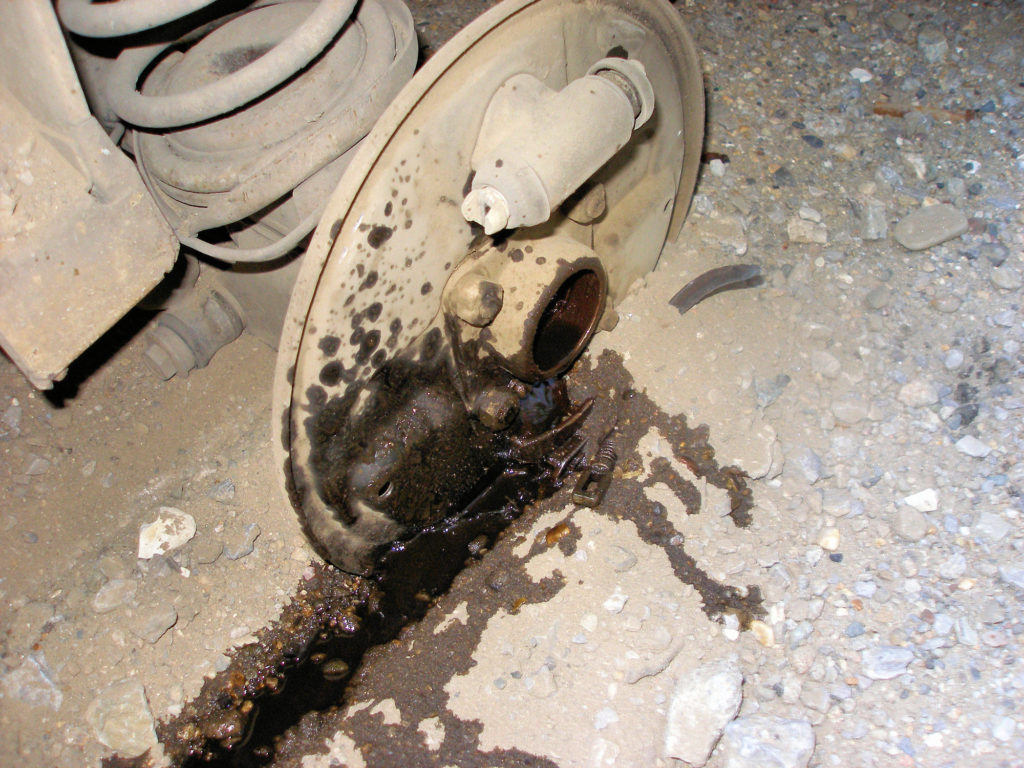
Contents
Car Brake Fluid Overview
Brake fluid, sometimes called hydraulic fluid, maintains pressure in the braking system on most vehicles. It lives inside of the brake lines, where it translates your push of the brake pedal into the clamping action of your brakes, slowing your car.
What Causes Brake Fluid Leak?
Brake fluid leaks have a range of potential causes, and some are easier to spot than others. You should deal with them urgently, as a loss of brake fluid can lead to a drop in the pressure in the braking system, and you could end up unable to stop your car.
Corroded or Damaged Brake Lines
Brake lines live underneath our vehicles. That means they are subject to all the abuse of debris, road salt, and anything else that might come up off the road.
So, over time, it’s relatively common that brake lines begin to rust or corrode. They can also develop leaks, from pinholes to significant breaks.
If your brake pedal feels soft, you might have a leak in the brake lines.
Loose Connections
Brake systems have bleed valves or bleed bolts. These valves allow you to purge air from the brake lines when adding or flushing your brake fluid. There must be no air in the system, or your brakes won’t perform correctly.
There is a bleeder valve at each caliper on the vehicle, so you might notice that one of your brakes has fluid on it. This might be a result of a bad valve. But, if you just had the car serviced, it’s possible that you or your mechanic left the valve slightly open.
Bad Master Cylinder
The master cylinder helps to maintain pressure in the braking system. It can start to leak due to corrosion, a bad seal on the cap, or just due to wear and tear over many cycles of your braking system.
The most likely way to spot a master cylinder leak is to see a bit of brake fluid under your car.
You might also see some fluid leaking from the cap or the cylinder itself when you look under your car’s hood. The master cylinder usually sits to the side of the engine, someplace relatively easy to access.
Leaking Wheel Cylinder
On cars and trucks with drum brakes, you may end up with a leaking brake cylinder at the wheels. This leak will end up leaving a telltale splash of brake fluid on your tires.
How to Detect Brake Fluid Leak
There are a few ways to detect a brake fluid leak. If the fluid in your master cylinder doesn’t reach the appropriate mark on its label, you could have a leak.
Brake fluid doesn’t disappear, and if the amount in the system has decreased, it’s leaking somewhere. You can also detect a brake fluid leak by looking for evidence of drips on the wheels, brakes, and on the floor under your car.
If you don’t pay close attention to the maintenance of your brake system, the first evidence of a leak might be that the pedal doesn’t behave right when you press it. A spongy or soft brake pedal that goes to the floor too quickly when pressed is hazardous.
Where Will Brake Fluid Leak From?
It’s impossible to predict exactly where you might develop a brake fluid leak. But, you can carefully inspect all of the components of the system to see what’s going on.
To get started, look at the brakes themselves at all four corners of the car. Then work your way down the lines, toward the front of the vehicle, and finally inspect the master cylinder.
Common Brake Fluid Leak Symptoms
Brake fluid leaks sometimes reveal themselves by showing specific symptoms while you’re driving.
Warning Lights on the Dash
If you begin to lose brake fluid, your car’s braking system may detect the drop in fluid level and trigger a warning light on your dashboard.
Modern cars have very sensitive Anti-Lock Braking Systems (ABS) that are very sensitive to losing even small amounts of fluid. Check your owner’s manual to see what a warning light might look like on your particular vehicle, but something like this is standard.
Soft Pedal Feel
If your brake pedal feels spongy or doesn’t offer the expected resistance when you push it, you might have a leak in the system. You might even hear a slight hissing noise.
Puddling under the Car
If you see an oily puddle underneath your car, particularly underneath the master cylinder or another braking component, you might have a leak.
Erratic Braking Performance
If your braking system doesn’t operate as you expect it to, you might have a leak. For instance, if the pedal feel isn’t consistent, the car pulls to one side when braking, or it doesn’t stop the way you expect it to, check the system for leaks.
Old Brake Pads
This isn’t a sign of a leak, but driving with old brake pads may create symptoms that mimic the loss of fluid, like a soft brake pedal.
As the pads wear down, it takes more force to press them into contact with the rotor to slow the car. That may change the feel of the brake pedal when you press it with your foot.
If you change the pads, the condition may go away, but it’s a good idea to also change your brake fluid while you’re at it.
What Happens if Brake Fluid Leaks?
If brake fluid leaks from your system, it will have a negative impact on your ability to stop the car. Your vehicle’s braking system is sealed, and brake fluid doesn’t just disappear or evaporate. So if the fluid reading drops, you have a leak somewhere.
Losing a couple of drops of brake fluid won’t prevent you from stopping your vehicle. But, even the loss of a small amount of fluid will reduce your overall braking capability. So, you should have any leaks fixed as soon as possible.
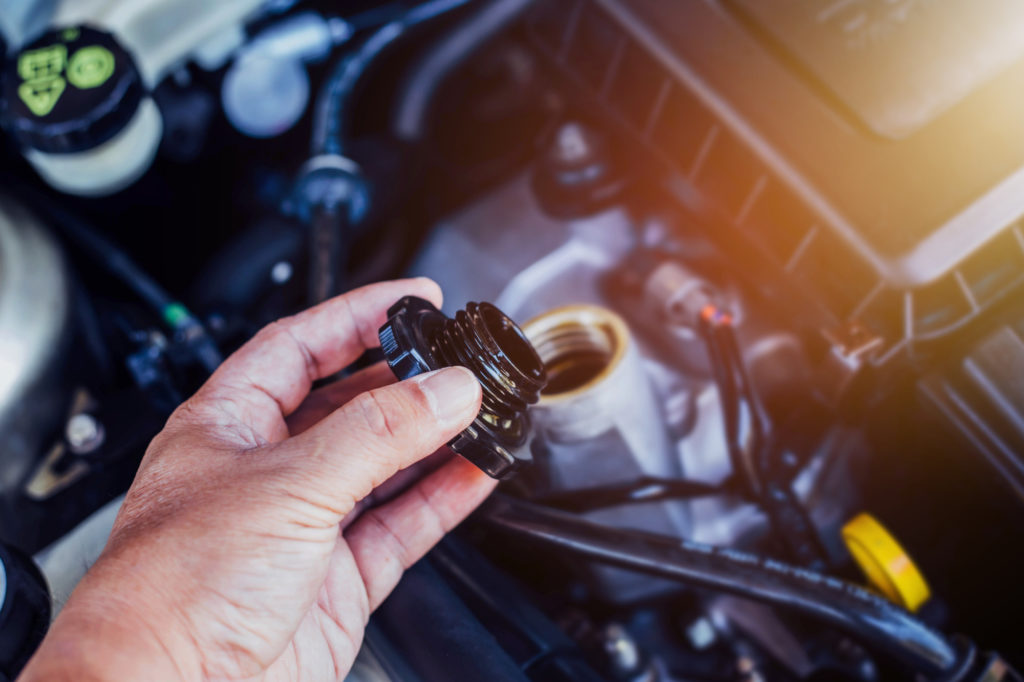
How to Fix Brake Fluid Leak
If you bring your car to a mechanic, they can repair your brake fluid leak. If you want to go the DIY route, here are five steps to handle your leak.
Step 1: Isolate the Leaking Component
Before you can fix anything, you must identify the leaking component. If there is substantial corrosion, you might have to replace more parts, so make sure you have everything you need.
Step 2: Fix the Leak
To fix the leak, you might have to change a brake line. That involves loosening the bolts and replacing the line, then retightening the bolts. Brake lines come in kits for specific vehicles, or you can just buy generic brake lines and bend them into shape yourself.
If you have a leaking master cylinder, caliper, wheel cylinder, or another component, you must replace the part with one appropriate for your vehicle.
Remember that brake fluid will damage the car’s paint and your skin, so always be safe and try to minimize spilling the fluid. You might need to hang the brake lines while you’re working, so you don’t let all the fluid run out yet.
Step 3: Flush the Old Fluid and Replace with New Fluid
Now that the new components are in place, you can remove the old fluid and replace it with new fluid. You can buy a special vacuum tool to make this easier. Or, you can simply open all the valves and pump the brakes to evacuate the system while adding fluid to the reservoir.
Step 4: Bleed the Brakes
Once the system’s old fluid has been replaced, you have to ensure there are no air bubbles. To do this, you’ll need a helper.
Start at the corner of the car farthest from the master cylinder and open the valve while your partner pumps the pedal a few times. Repeat this until only new fluid comes out. Then do the same at all four corners.
Step 5: Test the Brakes
Even if you’re confident you did a great job, make sure to test the system before taking the vehicle in traffic.
Brake Fluid Leak FAQs
How Much Does It Cost to Fix a Brake Fluid Leak?
A simple leak in the fuel line might only cost a couple of hundred dollars to repair, and you might even get the fluid flushed as part of the price.
For more extensive brake repairs and replacements, especially on high-performance cars, the price of fixing a leak can be more than a thousand dollars.
Can You Drive with a Brake Fluid Leak?
You can drive your car with a brake fluid leak. But you shouldn’t. It’s inherently dangerous, and you could hurt yourself or others if your car doesn’t stop the way it should.
What Color Is Brake Fluid?
When it comes out of its original container, brake fluid can be red, yellowish, blueish, or even purple, varying with its design and application. All brake fluids darken after use in the vehicle, so you can easily tell older fluid from new.
My Brake Fluid Is Low. Can I Just Add More?
Yes, you can top off your brake fluid in the reservoir under the hood. Just make sure you’re using the manufacturer’s exact recommended fluid.
Can You Lose Brake Fluid without a Leak?
No, the braking system is sealed, and brake fluid doesn’t evaporate.
How Long Does It Take to Fix a Brake Fluid Leak?
A simple repair like a loose valve should take only a few minutes. Changing calipers or other parts of the system can take a few hours.

